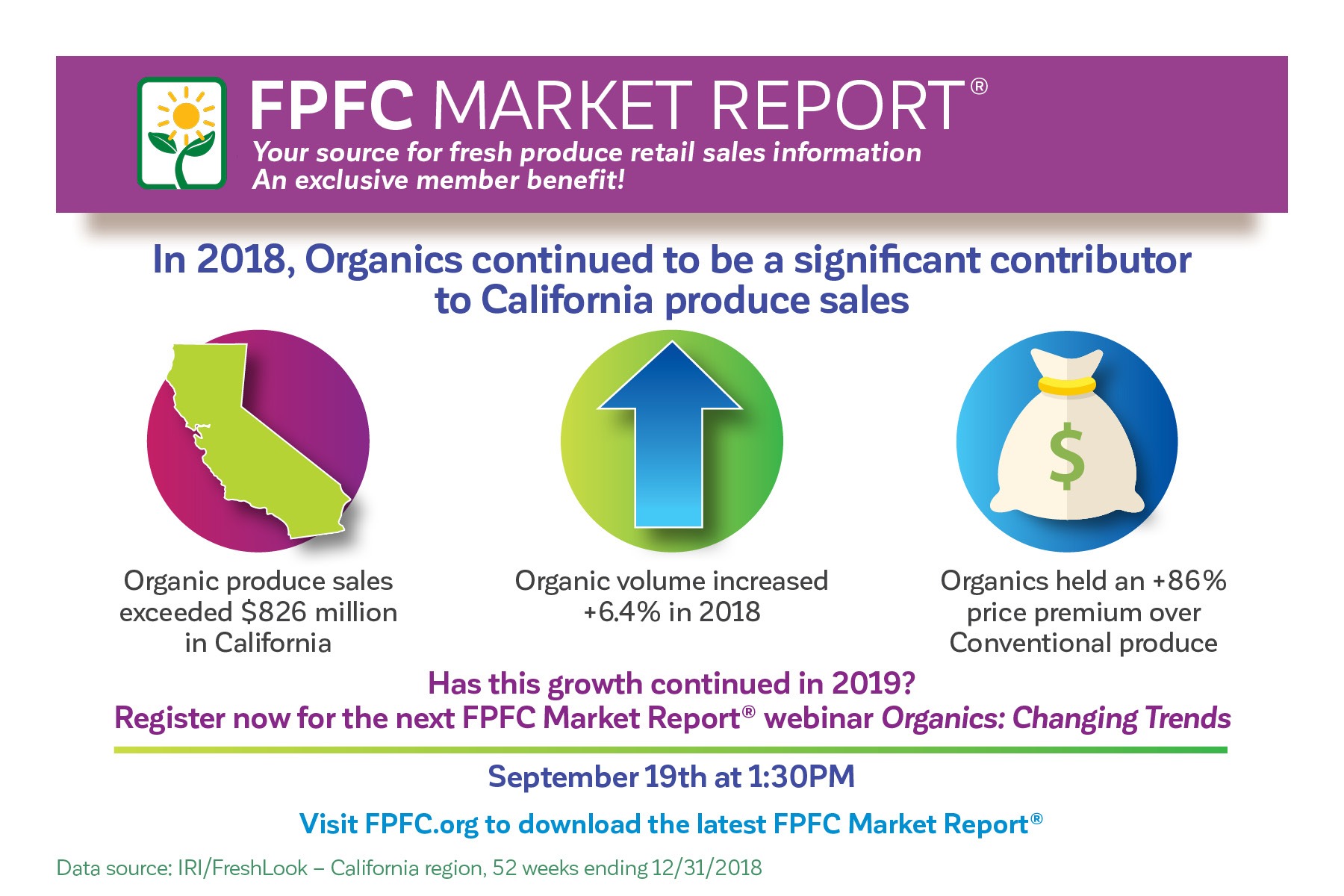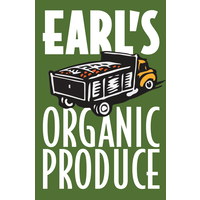A recent examination of retail scan data for the organic produce category revealed that sales in that sector have slowed down or maybe even declined, but there are still plenty of opportunities for growth, according to a couple of organic produce industry leaders.
Four times a year, Fusion Marketing, an agency specializing in the fresh produce sector, prepares a California and produce-specific retail sales report for the Fresh Produce & Floral Council and its members.

The most recent report looking at the second quarter of 2019, plus the previous 52 weeks, indicated overall organic produce sales were down for that quarter, and the growth over the previous 52 weeks was slower than what the industry has experienced over the past decade or so.
The FPFC Market Report reported a 2.7 percent decline in revenue through the first two quarters of this year. Over the past five years, the report has shown year-over-year growth ranging from 2.1 percent to 16.1 percent with 2018 registering a 6.2 percent increase in dollar sales. In fact, the first quarter of this year continued the five-year trend of year-over-year gains for the quarter with a 1.7 percent increase. The second quarter of 2019, however, registered a 3.7 percent decrease in dollar sales from Q2 2018. The quarter represented the first year-over-year quarterly decline reaching back to 2015, which were the earliest records presented.
All of the losses came from the fruit category as vegetable dollar sales were up. A contributing factor for the category dollar decline is that the average price per pound for organic produce trended lower for the first two quarters. There is also the caveat that a dip in supplies could also adversely affect the dollar sales numbers. Nonetheless, the data does seem to point out, at the very least, that the days of runaway sales gains in organic produce, on a percentage basis, are in the rearview mirror.
 (graphic courtesy of FPFC online)
(graphic courtesy of FPFC online)
Organic produce, however, is still leading the way in terms of growth and over indexing in dollar sales. The numbers revealed that in the state of California organic produce had a 6 percent volume share of total produce in the past year yet represented 11 percent of dollar sales. And over the past 52 weeks, organics contributed 18 percent of total produce dollar growth, far outpacing its share of the produce department.
The continued strength of the category, despite a slowdown in dollar sales, did not surprise a couple of veteran California organic produce wholesalers.
Robert Lichtenberg, director of purchasing for the well-known San Francisco wholesaler, Earl’s Organic Produce, said sales for that company do not reflect a decline. “We are in a different market, but we are still seeing growth,” he said, adding that new restaurants and retailers opening up in the San Francisco Bay Area are purchasing significant amounts of organic produce. And he said retailers continue to expand their own departments.

“The rate of growth has slowed down, but we are still experiencing growth,” he said, adding that many retailers are still expanding their own organic produce departments. “Retailers tend to start their organic departments with the salad mixes and expand from there, and we are still seeing that occur.”
Lichtenberg again noted that he is mostly talking about the San Francisco Bay Area marketplace, which, in fact, is the number one California market for organic produce, according to the FPFC Market Report.
David Weinstein, a veteran organic produce sales person for Heath & Lejeune Inc., a Los Angeles wholesaler specializing in organics, agreed that growth has slowed but he believes the potential for increased sales is still very strong. The problem, Weinstein said, is organic produce sellers are looking at the wrong markets. He said Heath & Lejeune has experienced year over year growth and has seen a lot of increase in business in ethnic-centric areas.

David Weinstein, organic produce sales, Heath & Lejeune
“I recently read an article that said it is minorities who are the most interested in buying organic produce,” he said.
Minority and the “others” category outranked “Whites” in their desire to purchase organic produce, according to Weinstein’s characterization of the article. He pointed out it is rare, if ever, to see produce suppliers creating culturally appropriate packs for these various groups. On the other hand, he said an ethnic market in Los Angeles will feature national brands of packaged goods marketed specifically to different ethnicities with labels in the appropriate language.
Weinstein said one explanation for slower growth in the organic produce category is that suppliers are spending all their marketing dollars on the same base. “It’s not surprising that sales have slowed. There is a huge market out there that no one is promoting to. It’s Marketing 101…start trying to sell your product where those who want it are shopping,” he said.
In Los Angeles, retailers that caters to Hispanics and Asians are seeing growth in the organic category. “And we are seeing new stores going up in those areas,” he said, relaying that not only is there growth in ethnic chains but the “old natural food stores are also putting new stores in those areas that are successful.”






